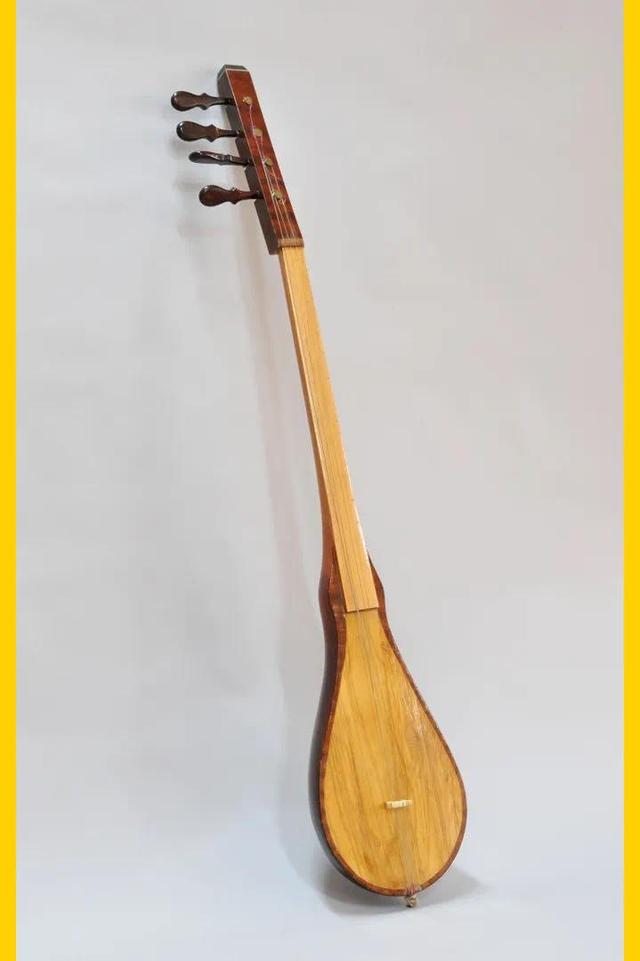The historical development of Huobusi
439 views · Organized by F.JCLOVE on 2022-02-09
Huobusi, which has a long history, appeared in the early 1st century BC. It is a stringed musical instrument jointly created by the nomadic people of northern my country in ancient times.

Huobusi was seen in the Yuan Dynasty, "Yuanshi·Liyuezhi" (Volume 71) contains: "Huobusi, made like a pipa, with a straight neck, no grades, a small groove, a round belly like a half bottle, made of leather Noodles, four-stringed leather fritters, and the same solitary pillar." This musical instrument was included in the national music in the Yuan Dynasty when the Mongolian capital Beijing was established, and was often played at grand banquets in the palace or at royal banquets. Later, it was widely spread and prevalent in the Central Plains, and in the areas of Shanxi, Shaanxi and Henan, the Han people also liked it.
It was popular in the Ming Dynasty. In the middle of the 15th century, when the Mongolian Oara tribe was strong, Huobusi was among the gifts presented by the Ming court to the Oara Khan. In the "Civil Change" in the 14th year of Ming Yingzong's orthodoxy (AD 1449), Taishi Oara who captured Yingzong was also very good at music first. Fire does not think and sings. Huobousi is popular among Mongolians and plays a role in communicating the cultural connection between Mongolia and Han.
In the Qing Dynasty, the Mongolian fashion became popular again. This is because before the Qing Dynasty entered the customs (called Houjin), the Manchu culture was greatly influenced by the Mongolian culture. After entering the customs, the Qing Dynasty inherited the Central Plains culture, which was dominated by the Han nationality. , and consciously advocated Manchu and Mongolian culture, so many Yuan Dynasty customs flourished again.
In the Qing Dynasty, Mongolian music was listed as one of the national music. Except when it was played during the feast of Mongolian princes, it was also played on the first day of the first lunar month, the 15th dynasty meeting of the first lunar month, and when Mulan was walking around.
In the early years of the Republic of China, Huobusi was still used in the band of the Haraqin Palace in eastern Inner Mongolia. Huobusi is also used in folk instrumental ensembles, and it is still used today in the Shifan Club performance in Donghan Village, Yi County, Hebei Province. The traditional Huobusi is shaped like a rice spoon, with a long piano rod and a small resonance box. Because the sound box is covered with a film, the sound is full of strong grassland flavor.
Involving musical instruments
Huobusi (pinyin: huǒ bù sī) is a Mongolian plucked musical instrument. It was found in the Yuan Dynasty and was popular in the Ming Dynasty. It was included in the national music in the Qing Dynasty. It is spread in Xinjiang, Inner Mongolia, northern Gansu and Lijiang Naxi Autonomous County in Yunnan Province.
Guess you like
Organized by 尘夕 on 2022-03-31
"We have improved the traditional 'Huobusi', and have improved 9 playing defects such as intonation, timbre, and playing comfort. We have also innovated and optimized the appearance and surrounding supporting facilities. At present, the research and development has been completed. Basic samples were also tested successfully."
read >>
Organized by 肖毅 on 2022-03-27
Since 2006, Huobousi Musical Instruments has entered the music classes of Xianghuangqi middle and primary schools in Xilin Gol League. In Mongolian middle school, vocational middle school, and Mongolian elementary school, there are 3 music lessons per week in Huobushi, which is taught by Wu Rina, who is under the teacher Chenggao Qingletu.
read >>
Organized by 南丘 on 2022-03-25
The plucked musical instrument Huobousi has a long history. It was first seen in ancient paintings of the Tang Dynasty and prevailed in the court of the Yuan Dynasty. After the founding of New China, it was widely spread, mainly in Inner Mongolia, Xinjiang, northern Gansu and other places.
read >>
Organized by 华夫饼 on 2022-02-09
Huobusi, a Mongolian plucked musical instrument, was found in the Yuan Dynasty, prevailed in the Ming Dynasty, and was included in the national music in the Qing Dynasty. It is spread in Xinjiang, Inner Mongolia, northern Gansu and Lijiang Naxi Autonomous County in Yunnan Province.
read >>
 渝公网安备 50010702504639号
渝公网安备 50010702504639号